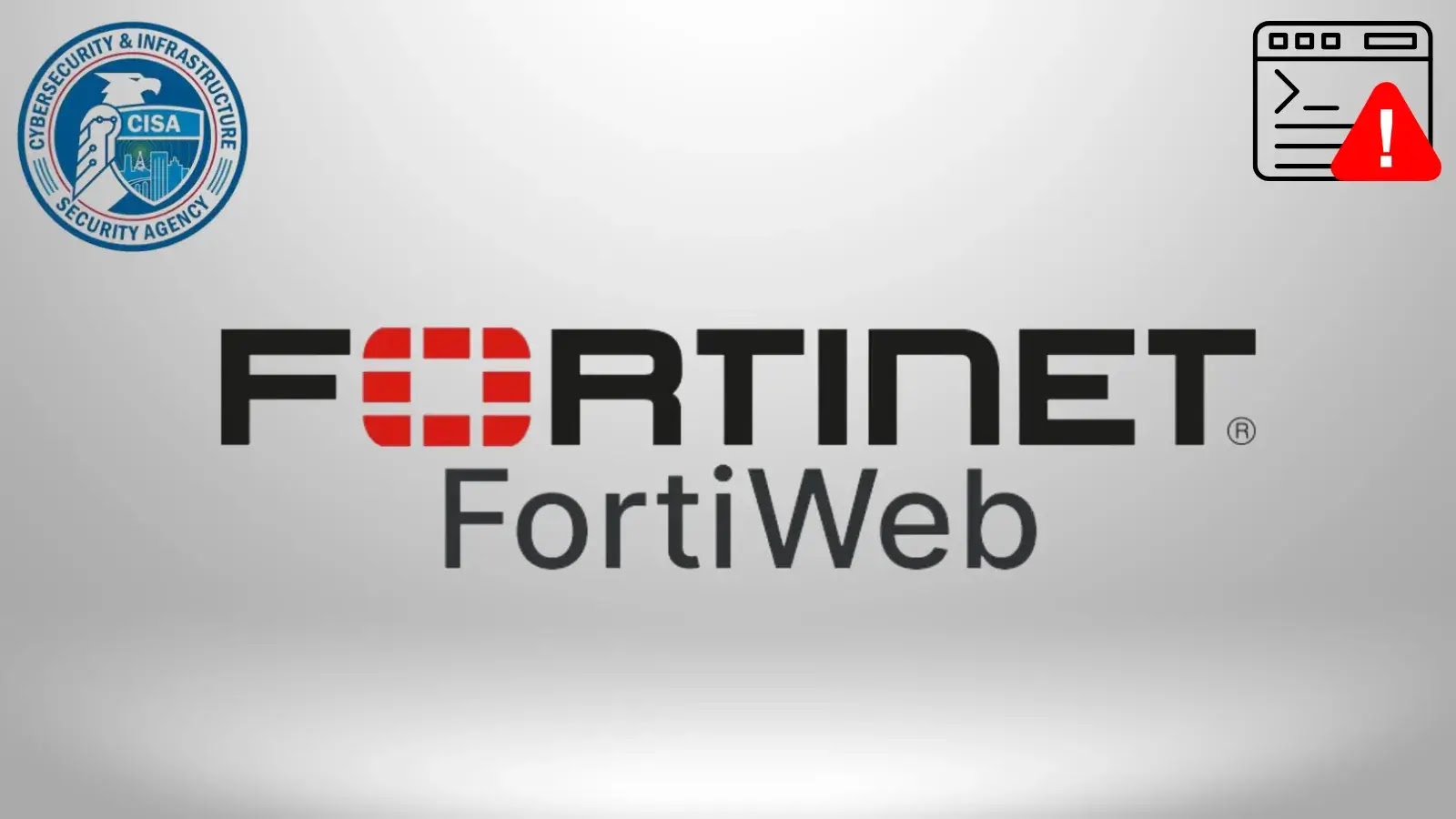
CISA Warns of Fortinet FortiWeb OS Command Injection Vulnerability Exploited in the Wild
CISA Sounds Alarm: Fortinet FortiWeb Vulnerability Actively Exploited in the Wild
The cybersecurity landscape grows increasingly complex, and the latest warning from the Cybersecurity and Infrastructure Security Agency (CISA) underscores this reality. CISA has issued an urgent alert regarding a critical vulnerability within Fortinet FortiWeb appliances, one that threat actors are already actively exploiting in real-world attacks. This development demands immediate attention from IT professionals and security teams safeguarding their organizations.
Understanding the Threat: CVE-2023-58034 and OS Command Injection
On November 18, 2025, CISA added CVE-2023-58034 to its Known Exploited Vulnerabilities (KEV) catalog. This designation is a stark signal: the vulnerability is not theoretical; it’s a proven gateway for malicious activity. The vulnerability in question is an OS command injection flaw affecting Fortinet FortiWeb appliances. An OS command injection vulnerability allows an attacker to execute arbitrary operating system commands on a server. If exploited, an attacker could gain unauthorized access, manipulate data, or completely compromise the affected system. For organizations relying on FortiWeb as their web application firewall (WAF), this presents a significant and immediate risk.
Why CISA’s KEV Catalog Listing Matters
Inclusion in CISA’s KEV catalog is not a casual occurrence. It signifies that a vulnerability has been verified as actively exploited in the wild, posing an “unacceptable risk to federal civilian executive branch agencies.” While this directive is aimed at federal agencies, the implication for all organizations is clear: if an adversary is successfully using this vulnerability against federal targets, they will likely use it against others. This status elevates CVE-2023-58034 from a potential threat to a critical priority requiring swift action.
Remediation Actions: Securing Your FortiWeb Appliances
Given the active exploitation, immediate remediation is paramount. Organizations using Fortinet FortiWeb appliances must act decisively to protect their infrastructure:
- Patch Immediately: The most crucial step is to apply available patches or firmware updates provided by Fortinet. Always refer to Fortinet’s official security advisories for specific version numbers and upgrade paths.
- Review Logs for Compromise: Even after patching, assume potential compromise. Thoroughly review FortiWeb appliance logs and associated network traffic for any indicators of compromise (IoCs) or suspicious activity that may have occurred prior to patching. Look for unusual command execution, unauthorized file access, or unexpected network connections.
- Isolate and Segment: If compromise is suspected, isolate affected systems from the rest of the network to prevent lateral movement of attackers. Implement robust network segmentation to limit the blast radius of any future breaches.
- Strengthen Access Controls: Ensure strong, unique passwords for all administrative interfaces and enable multi-factor authentication (MFA) wherever possible on all critical systems, including FortiWeb.
- Regular Vulnerability Scanning: Implement a continuous vulnerability management program that includes regular scans for known vulnerabilities across your entire IT infrastructure.
Tools for Detection and Mitigation
Leveraging the right tools can significantly aid in identifying vulnerable systems and detecting potential exploitation attempts. Here are some relevant tools:
| Tool Name | Purpose | Link |
|---|---|---|
| Nessus | Vulnerability scanning and assessment | https://www.tenable.com/products/nessus |
| OpenVAS | Open-source vulnerability scanner | https://www.openvas.org/ |
| FortiGuard Labs Threat Intelligence | Real-time threat intelligence and advisories from Fortinet | https://www.fortiguard.com/ |
| Security Information and Event Management (SIEM) Systems (e.g., Splunk, ELK Stack) | Centralized log collection, analysis, and alerting for suspicious activities | Varies by vendor (e.g., Splunk, ELK Stack) |
Key Takeaways for Cybersecurity Professionals
The CISA warning concerning CVE-2023-58034 in Fortinet FortiWeb appliances is a critical reminder that proactive cybersecurity posture is non-negotiable. Organizations must prioritize patching, vigilant monitoring, and a robust incident response plan. Staying informed about CISA’s KEV catalog and vendor advisories is essential for mitigating the risks posed by actively exploited vulnerabilities. Your immediate attention to this vulnerability is crucial for maintaining the security and integrity of your web applications and network infrastructure.





